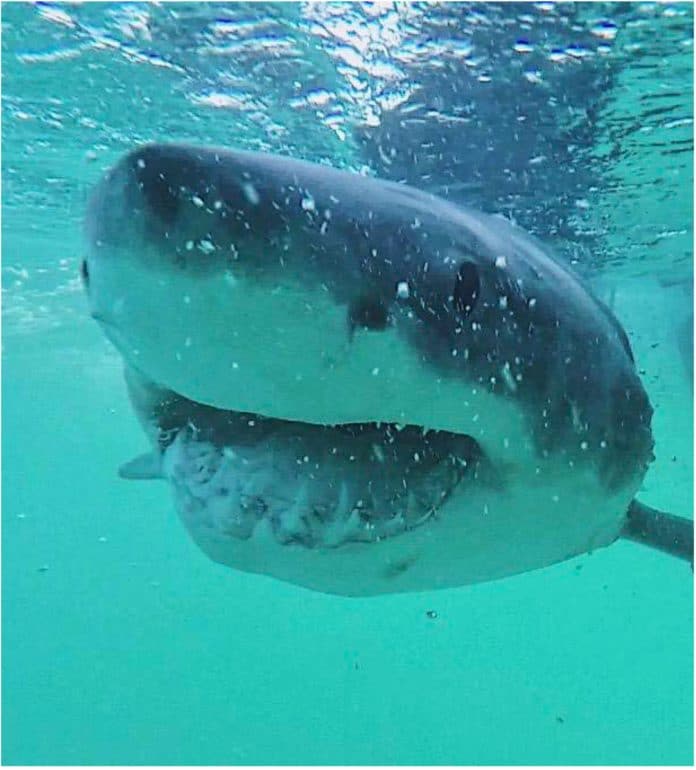Establishing diets and dietary generalism in top marine predators is critical for understanding their natural jobs and responses to environmental fluctuations. Nutrition assumes a key mediatory role in species-environment interactions, yet depictions of marine predators’ diets are normally restricted to the blends of prey species consumed.
In a first of its kind of study, scientists studied the diets great white sharks off the east Australian coast. Their research reveals that this apex predator spends more time feeding close to the seabed than expected.
Lead author Richard Grainger, a Ph.D. candidate at the Charles Perkins Centre and School of Life and Environmental Sciences at the University of Sydney, said, “Within the sharks’ stomachs we found remains from a variety of fish species that typically live on the seafloor or buried in the sand. This indicates the sharks must spend a good portion of their time foraging just above the seabed.”
“The stereotype of a shark’s dorsal fin above the surface as it hunts is probably not a very accurate picture.”
Dr. Vic Peddemors, a co-author from the NSW Department of Primary Industries (Fisheries), said: “We discovered that although mid-water fish, especially eastern Australian salmon, were the predominant prey for juvenile white sharks in NSW, stomach contents highlighted that these sharks also feed at or near the seabed.”
Mr. Grainger said: “This evidence matches data we have from tagging white sharks that shows them spending a lot of time many meters below the surface.”
For the study, scientists studied the contents of 40 juvenile white sharks (Carcharodon carcharias) caught in the NSW Shark Meshing Program. They then compared this with published data elsewhere in the world, mainly South Africa, to establish a nutritional framework for the species.
Dr. Gabriel Machovsky-Capuska, an adjunct Senior Research Fellow at the Charles Perkins Centre and a co-author of the study, said, “Understanding the nutritional goals of these cryptic predators and how these relate to migration patterns will give insights into what drives human-shark conflict and how we can best protect this species.”
Mr. Grainger said: “White sharks have a varied diet. As well as east Australian salmon, we found evidence of other bony fish, including eels, whiting, mullet, and wrasses. We found that rays were also an important dietary component, including small bottom-dwelling stingrays and electric rays.”
Based on the abundance, scientists found that sharks’ diet relied mostly on:
- Pelagic, or mid-water ocean swimming fish, such as Australian salmon: 32.2%
- Bottom-dwelling fish, such as stargazers, sole or flathead: 17.4%
- Reef fish, such as eastern blue gropers: 5.0%
- Batoid fish, such as stingrays: 14.9%
Mr. Grainger said, “The remainder was unidentified fish or less abundant prey. The marine mammals, other sharks and cephalopods (squid and cuttlefish) were eaten less frequently.”
“The hunting of bigger prey, including other sharks and marine mammals such as dolphins, is not likely to happen until the sharks reach about 2.2 meters in length.”
Scientists also found that larger sharks tended to have a diet that was higher in fat, likely due to their high energy needs for migration.
Co-author Professor David Raubenheimer, Chair of Nutritional Ecology in the School of Life and Environmental Sciences, said, “This fits with a lot of other research we’ve done showing that wild animals, including predators, select diets precisely balanced to meet their nutrient needs.”
Journal Reference:
- Richard Grainger et al., Diet Composition and Nutritional Niche Breadth Variability in Juvenile White Sharks (Carcharodon carcharias). DOI: 10.3389/fmars.2020.00422
